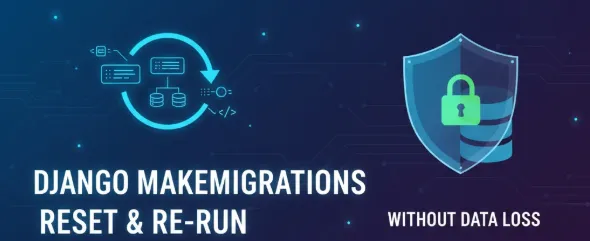How re-run django makemigrations without losing database data

Introduction
I’ve previously written how to squash migrations in django, which is the propper way to consolidate several migrations into one file.
But recently, I’ve found myself in an edge case:
I started a new project, so my migrations were all over the place, I ran 10 makemigrations commands in like 40 minutes. I am far from deploying, but I already have some useful data in my dev database for testing purposes that I want to preserve.
So I have 2 solutions for this:
-
- Pros: Preserve the existing database data
- Cons: Create a lot of unnecessary database operations and have an overcomplicated migration file (i.e.: I create a model but then I forgot to put decimal constraints on a certain field, that’s 2 operations instead of just 1)
-
Run
django manage.py migrate myapp zeroto remove all the migrations from the database, and re-runpython manage.py makemigrationsandpython manage.py migrate- Pros: Have a clean migration file
- Cons: Lose all the database data
So I wondered:
Isn’t there a way we can have the best of both worlds?
Turns out… we can!
Fake reverting migrations in django
The trick is to fake revert the migrations, instead of reverting them for real.
Here’s how to do it:
-
Run
python manage.py migrate myapp zero --fakeThe
--fakeflag will tell django to mark the migration as not applied in thedjango_migrationstable, but without modifying the data in the database. -
Delete the migration files (remove all the migration files you want to consolidate into just one)
-
Create new migration files
python manage.py makemigrations myapp -
Fake apply the new migration:
python manage.py migrate autoipc --fakeThis marks the migration as applied without actually applying it in the database.
That’s it! You should have a super clean migration file without having lost the data.
This flow is SUPER useful during the development phase of django models.
Words of caution
- ALWAYS back up your data first, you never know what can go wrong.
- ONLY do this in isolated git branches when developing new django features. If you do this in prod you will most probably break something.
- ONLY do this if the models match the database schema. If you modify anything in the models in between this process, or have pending migrations, you will break everything.